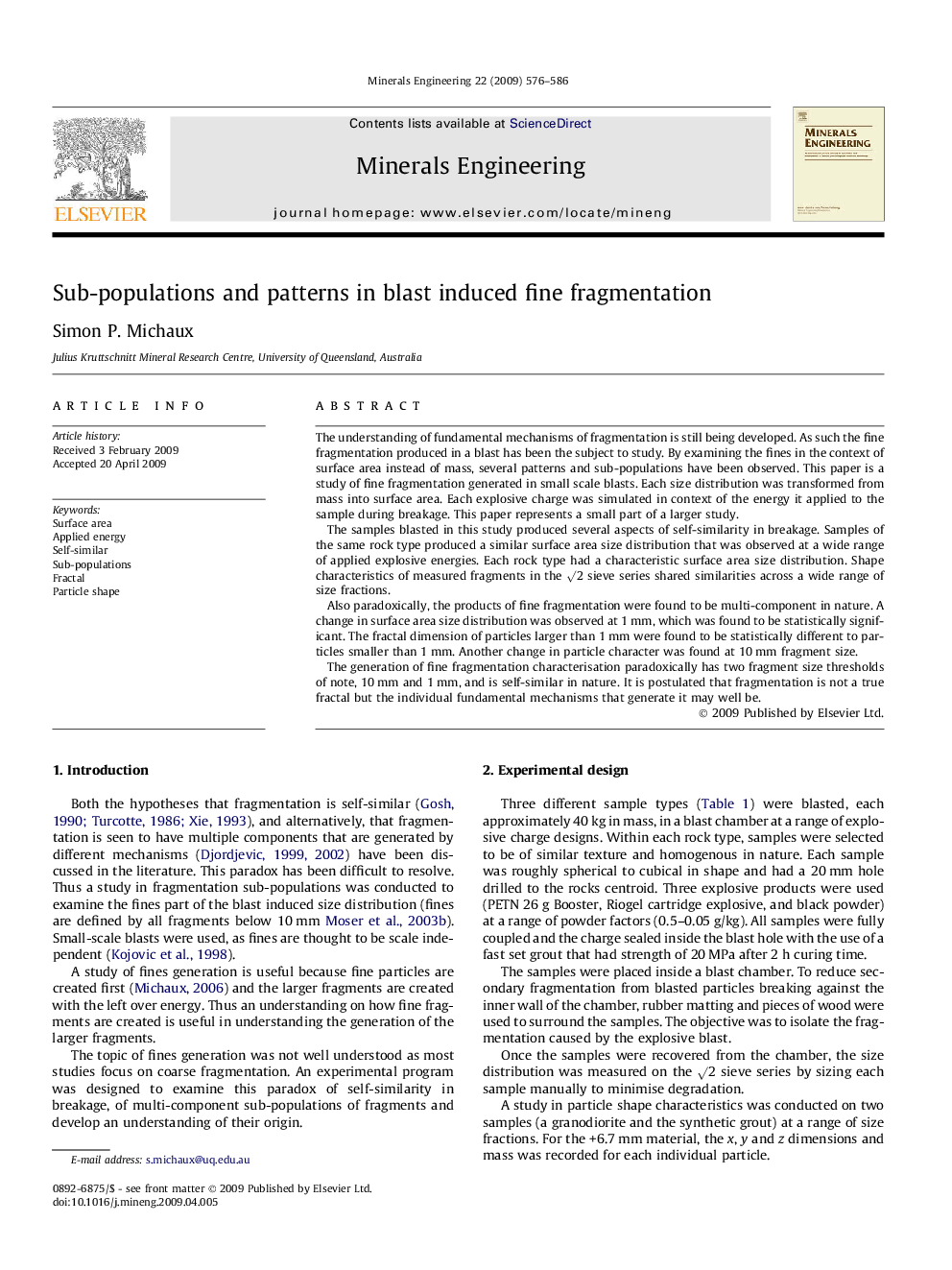| Article ID | Journal | Published Year | Pages | File Type |
|---|---|---|---|---|
| 234204 | Minerals Engineering | 2009 | 11 Pages |
The understanding of fundamental mechanisms of fragmentation is still being developed. As such the fine fragmentation produced in a blast has been the subject to study. By examining the fines in the context of surface area instead of mass, several patterns and sub-populations have been observed. This paper is a study of fine fragmentation generated in small scale blasts. Each size distribution was transformed from mass into surface area. Each explosive charge was simulated in context of the energy it applied to the sample during breakage. This paper represents a small part of a larger study.The samples blasted in this study produced several aspects of self-similarity in breakage. Samples of the same rock type produced a similar surface area size distribution that was observed at a wide range of applied explosive energies. Each rock type had a characteristic surface area size distribution. Shape characteristics of measured fragments in the √2 sieve series shared similarities across a wide range of size fractions.Also paradoxically, the products of fine fragmentation were found to be multi-component in nature. A change in surface area size distribution was observed at 1 mm, which was found to be statistically significant. The fractal dimension of particles larger than 1 mm were found to be statistically different to particles smaller than 1 mm. Another change in particle character was found at 10 mm fragment size.The generation of fine fragmentation characterisation paradoxically has two fragment size thresholds of note, 10 mm and 1 mm, and is self-similar in nature. It is postulated that fragmentation is not a true fractal but the individual fundamental mechanisms that generate it may well be.
